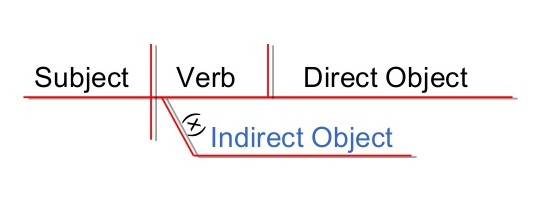
Here’s something you probably haven’t thought of in a really long time:
Diagramming sentences*.
When you diagram a sentence, you look at the function of each word. Subjects, verbs, and adjectives are usually involved but sometimes you also have a direct object and indirect object.
If you are now having flashbacks of middle school English class, I apologize but I promise there is a point to all of this.
I have a friend who has been dealing with some medical issues recently. She had a particular procedure done twice without success. After completing it for the 3rd time and waiting for the results, she was talking to someone about it and said “I hope it works!”
That person’s response was immediate…“You need to have faith.”
If this person knows my friend the way I do, we would agree that my friend is a woman of faith. But we may disagree on what faith looks like.
We often attribute faith to bold statements such as “I WILL get that job I applied for”, or “I WILL get married this year”…or in my friend’s situation “The procedure WILL work.”
We all love confident people who are bold enough to make such claims but can we get really real? Do they know for sure? Most times, they don’t.
Is that to say that God can’t give someone a word about a job, potential mate or procedure result? Of course He can. But the danger comes when the indirect object becomes the direct object (I told you there was a point to the whole diagramming sentences thing)…when our focus is on the “object of our wait” rather than the “Person of our faith”.**
Most of us know the story of Abraham. We know that God gave him a specific promise but there was a wait…a long wait…involved.
Most of us also know that Abraham is called the “Father of our Faith”. So, maybe we should look at his story to get this faith issue straightened out.
Romans 4:19 -21 (NLT) 19 Without weakening in his faith, he faced the fact that his body was as good as dead—since he was about a hundred years old—and that Sarah’s womb was also dead. 20 Yet he did not waver through unbelief regarding the promise of God, but was strengthened in his faith and gave glory to God, 21 being fully persuaded that God had power to do what he had promised.
While Abraham was “facing the facts”, some people might have told him like they told my friend… “Have faith!”. But in spite of receiving a direct promise from God, the object of his faith wasn’t in the fact that he was going to be a father, though he believed it to be true. His focus was that that he believed in the power of God.
Abraham knew he was past his prime. That wasn’t disbelief – that was just his current state. But he also knew His God. And that God had made a promise to him. And that God was able to fulfill that promise.
And God did.
The centurion in the New Testament impressed Jesus with his faith simply because he understood authority. The direct object of his faith wasn’t that his servant would be healed but that Jesus had the power to do it.
Beth Moore says, “Many people struggle continually to have more {faith}. They groan & they strain like a woman in labor. They think: If only I had more faith, my prayers could be answered… Faith is not an action; it is a response. If we strive to have faith, we may be miserably disappointed. But if we learn to trust in His faithfulness, we of all persons may be most blessed.”
My feet will keep standing on His promises but my eyes will be directly focused on His faithfulness.
~ Anu (with a shoutout to my English teachers. See, I was paying attention.)
* image from slideshare.net, ** quoted portion from “Wait and See” by Wendy Pope


